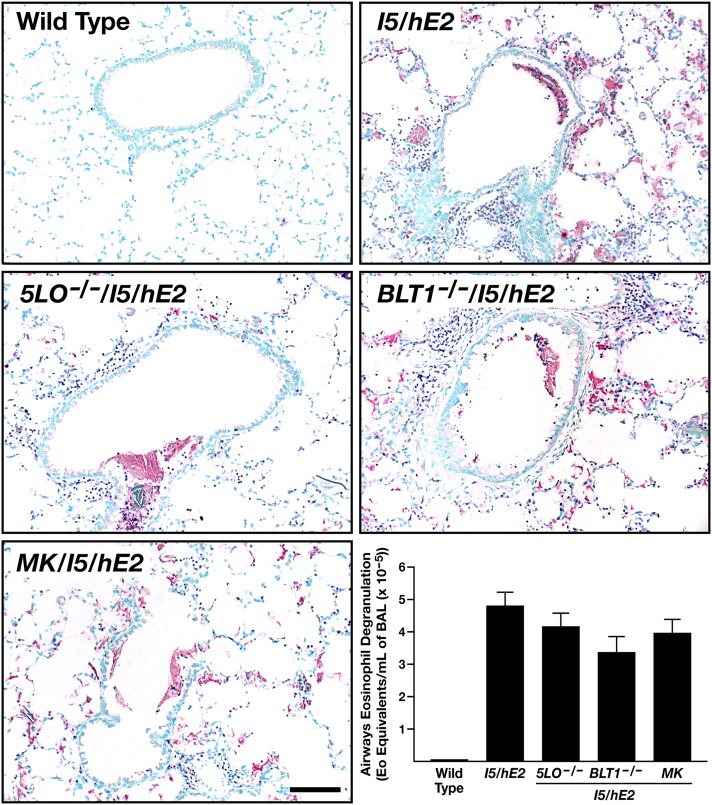Figure 5.
The extent of eosinophil degranulation associated with the I5/hE2 model is not a function of pulmonary leukotriene-mediated events. Immunohistochemistry of lung sections using a monoclonal antibody that specifically recognizes eosinophil peroxidase (EPX [12]) demonstrated that the induced tissue eosinophilia of the parental I5/hE2 model remained unchanged in I5/hE2 mice devoid of all leukotrienes (5-LO−/−/I5/hE2), LTB4 activities (BLT-1−/−/I5/hE2), or the blockade of cys-leukotriene–mediated events (MK/I5/hE2). Moreover, assessments of extracellular matrix–associated EPX deposition in the lungs of these animals showed that the extensive eosinophil degranulation (i.e., increased EPX) linked with the I5/hE2 model was not a function of leukotriene-mediated activities. Scale bar, 50 μm. ELISA-based assessments of bronchoalveolar lavage (BAL) fluid using paired monoclonal antibodies specific for EPX (13) showed that the level of airway eosinophil degranulation (expressed as the amount of EPX in an eosinophil [Eo]; equivalents per milliliter of BAL) in all groups of mice targeting leukotrienes was no different than the level observed in the parental I5/hE2 model. Scale bar, 100 μm.

